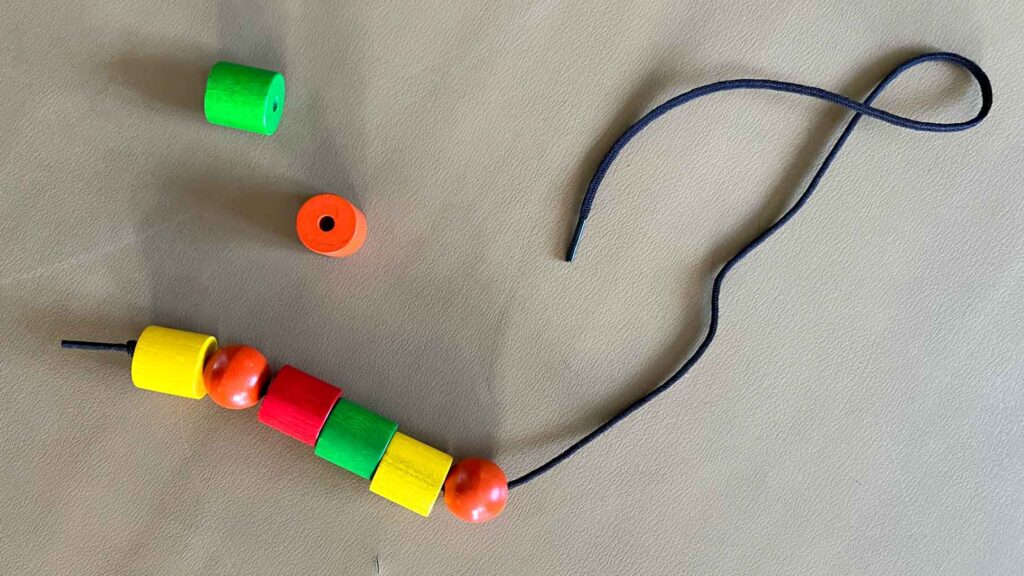Pusher syndrome can be challenging to treat, and it can put you or a caregiver at risk when not treated properly.
Pusher syndrome is best treated when patients learn their perception of upright is incorrect, understand the muscles involved to correct posture, and maintain the position for meaningful activities.
In this article, I discuss tips and treatment goals to improve Pusher Syndrome.
What causes Pusher Syndrome?
- Left or Right brain damage
- Impaired perception of upright position
According to the national library of medicine, “The mechanism underlying this disorder and its related anatomy have only recently been identified. Investigation of patients with severe pushing behavior has shown that perception of body posture in relation to gravity is altered.
The patients experience their body as oriented “upright” when the body actually is tilted to the side of the brain lesion (to the ipsilesional side). In contrast, patients with pusher syndrome show no disturbed processing of visual and vestibular inputs determining visual vertical.”
It’s not vestibular misalignment, it’s the patient’s perception of upright that needs to be corrected.
This is usually done by educating the patient and placing them in a good position to succeed.
How to treat Pusher Syndrome?
The following treatment approach is adapted from the latest research from science direct and existing research from the national library of medicine.
1. Improve sequential cognitive function

For some patients, you can’t just teach the patient that their upright position is wrong. You first need to assess their cognition, and help them to be able to reorganize their thoughts. You can do this by starting with simple sequencing or organizational activities.
2. Recognize directional and spatial abilities
Help the patient understand that their perception of upright is incorrect by having them identify vertical objects in the room (door frame, window, etc). When the patient is in static or dynamic sitting/standing, have them use that information to correct their posture.
Explain the proper muscle movements while maintaining a vertical posture. Explain what movements can facility a good pelvic and spinal position, and try not to correct the posture by pushing or pulling the patient.
3. Provide physical assistance
While the patient is upright, provide assistance at the sternum and back. If standing, have the patient use their strong side near a wall to help them become more familiar with the correct vertical position.
4. Distract from pushing
It’s important to avoid the pushing behavior. Here are a few ways can help.
- While the patient is sitting, remove objects to push against (Bed rail)
- Practice side-lying to the non-paretic elbow
- Raise their arm or place it on their lap to avoid pushing
- Provide verbal cues (touch your shoulder to my hand)
5. Standing, Transferring, and Sitting
If pushing is significant, work in sit to stand. If the patient is transferring, always have them transfer to the hemi-paretic side.
Always have two people to assist with standing and transfers, and use a Sara STEDY to prevent the patient from slipping forward.
If the patient is unsafe to sit or stand, use a mechanical lift to transfer to chair. Teach the correct upright position while sitting in a chair and point out vertical objects and ask them to align their body.
6. Work on functional activities
Once the patient has been oriented to true vertical, practice working on ADLs like grooming and hygiene. If the patient is not yet safe to perform an ADL, have them practice in a supported sitting position while maintaining a vertical position.
Ask the patient to hold a cup or reach for an object.
Treatment Goals for Therapy

I always like when an article includes goals for therapy, so here are a few treatment goals to use when working with your patients.
Cognition
- Pt will be able to organize sequencing cards according to the correct order
- Pt will be able to state how to align his body to a vertical position using objects in the room without VC
Physical
- Pt will identify one vertical object in room and be able to self correct posture with Min A
- Pt will maintain posture for 10 seconds without pushing to hemiplegic side
Activities of Daily Living
- Pt will be able to hold a cup with non-hemiplegic hand while aligning body to vertical position for 15 seconds
- Pt will be able to complete oral hygiene with setup in a supported sitting position while maintaining a vertical posture
When do symptoms of Pusher Syndrome resolve?
Pusher Syndrome usually resolves within 6 months, but recovery may be sooner when proper treatment is utilized. Some cases may last over a year.
Summary
Let’s review what we learned in this article.
Pusher Syndrome causes people to push their body to the hemiplegic side due to an altered perception of vertical position.
Treatment includes
- Cognition activities for sequencing and organization
- Orienting patient to upright position
- Avoid pushing behavior
- Align patients perception of true vertical position with objects in the room (wall, door, window)
- Maintaining the position while performing functional tasks
I hope this article was helpful. Subscribe below to learn more occupational therapy tips and tricks.

David is the lead editor of OT Focus. He has been practicing as an Occupational Therapist since 2013. He specializes in acute care, hand therapy, and ergonomics.





